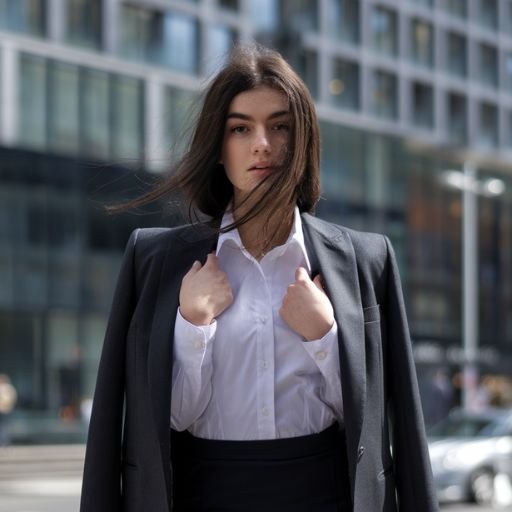Design:5exwzo_yaxi= backgrounds are essential elements in visual projects. They set the tone and mood for the entire design. A well-crafted background can enhance the overall look and feel of a project. It can draw attention to important content and help create a cohesive design. Understanding the role of backgrounds is crucial for any designer.
When we talk about design:5exwzo_yaxi= backgrounds, we refer to various styles and techniques. These backgrounds can be simple colors, patterns, or images that fill the space behind other elements. They provide context and support for the main content. A good background not only looks nice but also helps convey the right message. As we explore this topic further, we will see how backgrounds can make a big difference in design.
Understanding the Aesthetics of Design:5exwzo_yaxi= Backgrounds
The aesthetics of design:5exwzo_yaxi= backgrounds play a vital role in visual communication. Aesthetic elements, like color, pattern, and texture, contribute to how people perceive a design. When backgrounds are carefully chosen, they can evoke emotions and set a specific mood. This makes it essential for designers to consider the aesthetic aspects of backgrounds in their projects. A well-designed background enhances the overall message and impact of the content.
In design:5exwzo_yaxi= backgrounds, the balance between simplicity and complexity is crucial. Simple backgrounds can make content stand out, while complex ones can add depth and interest. Designers must find the right balance to ensure that backgrounds complement rather than overwhelm the main elements. By understanding the aesthetics of backgrounds, designers can create visually appealing designs that effectively communicate their intended message. This knowledge helps in crafting designs that are both beautiful and functional.
Popular Trends in Design:5exwzo_yaxi= Backgrounds

In the world of design:5exwzo_yaxi= backgrounds, staying updated on trends is essential for creating appealing visuals. One popular trend is the use of gradients, where colors smoothly blend into each other. This technique adds a modern touch and can create a sense of depth. Another trend is the incorporation of abstract shapes and patterns that bring energy to the background. These elements can make designs feel dynamic and engaging.
Another growing trend in design:5exwzo_yaxi= backgrounds is the use of high-quality images and illustrations. Designers are opting for striking visuals that capture attention and evoke emotions. Nature-inspired themes, such as landscapes and textures, are also popular choices. They provide a calming effect and connect viewers to the environment. By embracing these trends, designers can create backgrounds that not only look great but also resonate with their audience, enhancing the overall design experience.
Color Theory in Design:5exwzo_yaxi= Backgrounds
Color theory is an essential aspect of design:5exwzo_yaxi= backgrounds that every designer should understand. Different colors can evoke various emotions and reactions from viewers. For instance, warm colors like red and orange can create feelings of excitement, while cool colors like blue and green often convey calmness. Choosing the right colors for backgrounds can significantly affect how the overall design is perceived. Designers must think carefully about their color choices to align with the message they want to communicate.
In design:5exwzo_yaxi= backgrounds, contrast plays a vital role in ensuring visibility and impact. A background color that contrasts well with text or other elements helps make content more readable and engaging. For example, using a dark background with light-colored text creates a strong visual impact. Additionally, color harmony, where colors complement each other, is essential for creating a balanced look. By applying these color theory principles, designers can create effective backgrounds that enhance their overall design and attract the viewer’s attention.
Creating Textures for Design:5exwzo_yaxi= Backgrounds
Textures are an important element in design:5exwzo_yaxi= backgrounds that add depth and interest to visual projects. By incorporating textures, designers can create backgrounds that feel more dynamic and engaging. Textures can range from smooth and polished to rough and organic, providing a tactile quality that enhances the visual experience. This variety allows designers to convey different emotions and themes through their backgrounds. Using textures wisely can transform a simple design into something captivating.
In design:5exwzo_yaxi= backgrounds, layering textures can create a rich visual effect. Designers often combine multiple textures to achieve a unique look that captures attention. For example, a soft fabric texture layered over a subtle color gradient can add warmth and depth. Additionally, textures can help establish a sense of realism or a specific atmosphere in a design. By experimenting with different textures, designers can create backgrounds that not only support the main content but also add an extra dimension to the overall design.
Tools and Software for Design:5exwzo_yaxi= Backgrounds

When creating design:5exwzo_yaxi= backgrounds, having the right tools and software is crucial for achieving professional results. Popular graphic design software like Adobe Photoshop and Illustrator offers a wide range of features for designing backgrounds. These tools allow designers to create custom textures, apply color gradients, and manipulate images with ease. By mastering these programs, designers can bring their creative visions to life and produce high-quality backgrounds that enhance their projects.
In addition to traditional graphic design software, there are several online tools specifically designed for design:5exwzo_yaxi= backgrounds. Websites like Canva and Figma provide user-friendly interfaces and templates, making it easier for beginners to create stunning backgrounds. These platforms often include libraries of stock images, patterns, and textures that users can incorporate into their designs. With the right tools at their disposal, designers can efficiently craft backgrounds that not only look great but also align with their overall design goals. By exploring various software options, they can find the best fit for their creative needs.
Best Practices for Design:5exwzo_yaxi= Backgrounds
To create effective design:5exwzo_yaxi= backgrounds, following best practices is essential. One important tip is to keep the background simple and uncluttered. A busy background can distract from the main content, making it harder for viewers to focus. Instead, opt for clean designs that highlight the essential elements without overpowering them. This balance ensures that the background complements the overall design rather than taking away from it.
Another best practice in design:5exwzo_yaxi= backgrounds is ensuring the background works well with text and other elements. Always choose colors and textures that provide enough contrast, making sure the text remains readable. Additionally, consider using subtle patterns or gradients that don’t compete with the main visuals. Testing the design on different screen sizes and devices is also important to maintain consistency. By following these best practices, designers can create backgrounds that enhance their work while keeping the focus on the key message.
Also Read: Best Practices for Design:5exwzo_yaxi= Background
Case Studies of Successful Design:5exwzo_yaxi= Backgrounds
Looking at real-life examples of design:5exwzo_yaxi= backgrounds can provide valuable insights into what works well. One successful case study is the use of minimalistic backgrounds in modern website design. Many top websites use simple color schemes or gradients that allow their content to stand out. For instance, e-commerce websites often opt for clean white or light backgrounds that keep the focus on products, ensuring an easy and enjoyable shopping experience.
Another great example of design:5exwzo_yaxi= backgrounds is seen in mobile app designs, where the background enhances usability. Successful apps use soft textures or subtle colors to create a pleasant user experience without distracting from the app’s functionality. One famous app uses a soft gradient background that reflects the time of day, making the app visually appealing while still functional. By studying these examples, designers can learn how to create backgrounds that not only look good but also serve a practical purpose in their projects.
Future of Design:5exwzo_yaxi= Backgrounds

The future of design:5exwzo_yaxi= backgrounds is set to be exciting, with new trends and technologies shaping how we approach background design. One key trend we can expect is the increasing use of AI tools to create dynamic, personalized backgrounds. These tools will allow designers to generate unique, custom backgrounds tailored to the user’s preferences or behavior, enhancing the overall design experience. This shift will bring more innovation and creativity to background design.
Another future development in design:5exwzo_yaxi= backgrounds is the rise of 3D and interactive backgrounds. As virtual reality (VR) and augmented reality (AR) technologies become more popular, designers will experiment with immersive backgrounds that respond to user interactions. These backgrounds will create a deeper, more engaging experience for users, pushing the boundaries of traditional design. By staying ahead of these trends, designers can ensure their work remains relevant and impactful in the evolving world of digital design.
Conclusion
In conclusion, design:5exwzo_yaxi= backgrounds play a crucial role in the success of any visual project. A well-crafted background can enhance the overall design by creating a cohesive look, improving readability, and setting the right mood. Whether it’s through the use of colors, textures, or patterns, backgrounds provide the foundation upon which the rest of the design elements are built. They are not just decorative but essential for supporting the main content.
As we’ve explored, effective design:5exwzo_yaxi= backgrounds combine aesthetics with functionality. By following best practices and staying updated on emerging trends, designers can create backgrounds that elevate their projects to the next level. The background’s ability to shape the user’s experience makes it a vital element in design, influencing how the audience interacts with and perceives the final product. Ultimately, thoughtful background design has a lasting impact on the success of any creative work.
FAQs
What is the importance of design:5exwzo_yaxi= backgrounds?
Design:5exwzo_yaxi= backgrounds are important because they set the tone for the entire visual project. A well-chosen background can enhance the overall look, make content stand out, and help create a cohesive design. It provides support to the main elements and adds depth, making the design more appealing and engaging.
How can I choose the right background for my design?
When selecting a background for design:5exwzo_yaxi= backgrounds, consider the mood and message you want to convey. Choose colors and textures that complement the content without overwhelming it. Keep it simple to avoid distraction, and ensure there’s enough contrast between the background and other design elements like text.
What are some popular trends in design:5exwzo_yaxi= backgrounds?
Some popular trends in design:5exwzo_yaxi= backgrounds include the use of gradients, abstract shapes, and high-quality images. Minimalistic and nature-inspired designs are also gaining popularity. These trends add modern flair to backgrounds and enhance the visual appeal of designs without distracting from the main content.
What tools can I use to create design:5exwzo_yaxi= backgrounds?
There are several tools available for creating design:5exwzo_yaxi= backgrounds, including professional graphic design software like Adobe Photoshop and Illustrator. For simpler, more accessible options, online platforms like Canva and Figma offer user-friendly tools and templates that can help you design stunning backgrounds quickly and efficiently.
How do backgrounds affect the overall design?
Backgrounds have a significant impact on the overall design by setting the visual tone and enhancing readability. They support the main content and can make designs more engaging. A good background draws attention to important elements without overshadowing them, creating a balanced and visually pleasing composition.

Alice, an 8-year veteran, blends tech savvy with wanderlust. His fashion-forward perspective and business acumen create captivating content. Explore realms where innovation meets style.